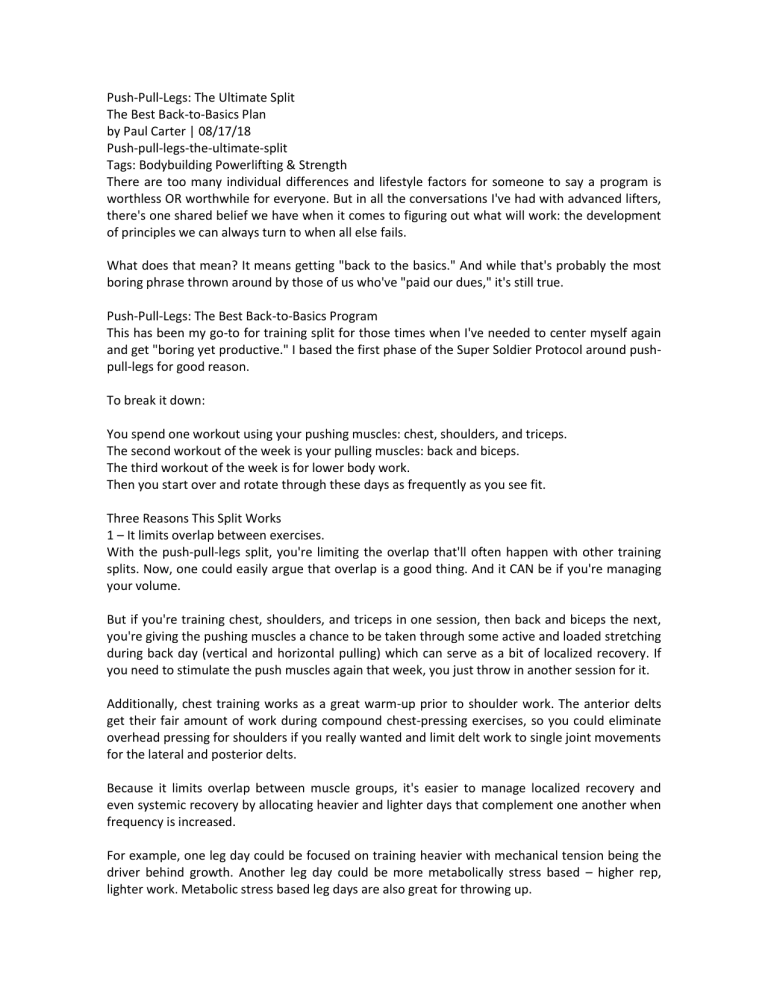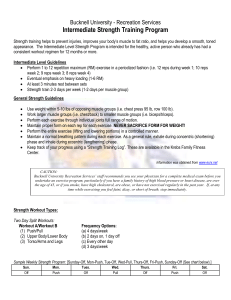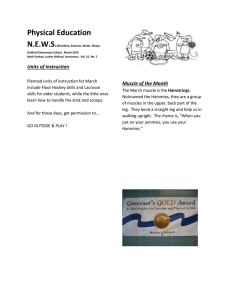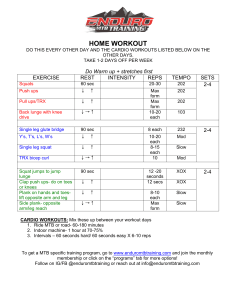
Push-Pull-Legs: The Ultimate Split The Best Back-to-Basics Plan by Paul Carter | 08/17/18 Push-pull-legs-the-ultimate-split Tags: Bodybuilding Powerlifting & Strength There are too many individual differences and lifestyle factors for someone to say a program is worthless OR worthwhile for everyone. But in all the conversations I've had with advanced lifters, there's one shared belief we have when it comes to figuring out what will work: the development of principles we can always turn to when all else fails. What does that mean? It means getting "back to the basics." And while that's probably the most boring phrase thrown around by those of us who've "paid our dues," it's still true. Push-Pull-Legs: The Best Back-to-Basics Program This has been my go-to for training split for those times when I've needed to center myself again and get "boring yet productive." I based the first phase of the Super Soldier Protocol around pushpull-legs for good reason. To break it down: You spend one workout using your pushing muscles: chest, shoulders, and triceps. The second workout of the week is your pulling muscles: back and biceps. The third workout of the week is for lower body work. Then you start over and rotate through these days as frequently as you see fit. Three Reasons This Split Works 1 – It limits overlap between exercises. With the push-pull-legs split, you're limiting the overlap that'll often happen with other training splits. Now, one could easily argue that overlap is a good thing. And it CAN be if you're managing your volume. But if you're training chest, shoulders, and triceps in one session, then back and biceps the next, you're giving the pushing muscles a chance to be taken through some active and loaded stretching during back day (vertical and horizontal pulling) which can serve as a bit of localized recovery. If you need to stimulate the push muscles again that week, you just throw in another session for it. Additionally, chest training works as a great warm-up prior to shoulder work. The anterior delts get their fair amount of work during compound chest-pressing exercises, so you could eliminate overhead pressing for shoulders if you really wanted and limit delt work to single joint movements for the lateral and posterior delts. Because it limits overlap between muscle groups, it's easier to manage localized recovery and even systemic recovery by allocating heavier and lighter days that complement one another when frequency is increased. For example, one leg day could be focused on training heavier with mechanical tension being the driver behind growth. Another leg day could be more metabolically stress based – higher rep, lighter work. Metabolic stress based leg days are also great for throwing up. 2 – You can emphasize muscle groups and weak areas. Combined with the right frequency, the push-pull-legs split is ideal for prioritizing a muscle group while putting the others in maintenance mode. Once again, the negating overlap is a big part of this. The other part is that if you wanted to really focus on bringing up a muscle group, you could. Let's say you wanted to build your shoulders. You could limit chest work to one pressing movement, then go ape shit on shoulder volume and movement selection. Here's what that would look like: Chest Dumbbell Bench Press: 2 working sets of 8-10 reps, short of failure Shoulders Behind the Neck Press: Use the 350 method (shoot for 50 total reps within 3 working sets using the same weight). Lateral Raise: Use a pyramid rep scheme. Do 25 reps with lighter dumbbells, then pick up a heavier pair and do 15 reps, then pick up a heavier pair and do 10 reps. Rest 3 minutes, and repeat in reverse beginning with 15 reps and heavier dumbbells. Rear Delt Prone Dumbbell Swing: 4 sets of 25 reps Plate Front Raise: 100 reps non-stop Front Plate Raise Triceps Tricep Pushdown: 2 sets of 25 reps With this push workout, you'd just get in a couple of sub-maximal effort sets for chest, then pour a metric shit-ton of training energy into your delt work and finish off with a couple sets of tricep work. During a specialization phase, you'd hit this same structure another time during the week, but with some different exercises. Remember, for full development in a lagging muscle group, building the mind-muscle connection is vital. But so is stressing the muscle at different lengths. Use a variety of movements for both. 3 – You can prioritize training goals. Now, let's say you want to strengthen your legs and get leaner. If you want to do this, you could alternate a heavy leg session with a more metabolic stress-based one. Your first leg workout would be lower volume and high intensity, while your second one would be moderate volume, low intensity, but high effort. It might look something like this nightmare: Leg Day 1 Exercise Sets Reps A Leg Curl 4 10-12 B Squat 85% of an EDM (every day max) 3 6 C Deficit Stiff-Leg Deadlift (1 heavy triple/back-off 12) Leg Day 2 Exercise Sets Reps 1/1 3/12 A1 Leg Extension 3 20 A2 Leg Press 3 20 B1 Leg Curl (5 second negatives) 3 B2 Good Morning (5 second negatives) C Walking Lunge 1 500/leg Try not to cry, lie down, and cry anyway. 10 3 10 Legs Back Chest The Frequency Factor: Use Push-Pull-Legs For Any Goal The examples above aren't set in stone. Adjust push-pull-legs for your goals and schedule. There are a ton of different ways to adapt this general training guideline, which is why I go back to it any time I feel stuck. Let's look at the frequency options so that you can get an idea of which one would suit you best. Frequency: 3 Workouts a Week Monday: Chest, shoulders, and triceps Wednesday: Back and biceps Friday: Legs This was my bread and butter during most of my powerlifting days. I'd bench and do support work on one day, then squat and deadlift another day, then do all of my squat and deadlift assistance work on the next day. So technically, the back and biceps day would have some leg stuff thrown in there as well (leg extensions and leg curls usually), but it was back and biceps dominant. I didn't make it complicated. You shouldn't either. Some lat pulldowns or chins and a row of some sort was my goto for back and lat work. Here's an example of how I set this up during my years of competitive powerlifting. This is only an example. I'd change some things depending on what I felt I needed to work on: Monday Exercise Sets Reps A Bench Press 1/*/1 Periodized work, usually a sub-max single, then multiple back-off sets of 6-8 reps, and 1 AMRAP set (do as many reps as you can in one set) B Incline Dumbbell Press 2 8-10 C Behind the Neck Press (1 heavy set of 5, then AMRAP) 1/1 5/AMRAP D Tricep Exercise (Varied from workout to workout) Wednesday Exercise Sets Reps A Squat (Periodized work) B Pause Squat 2 5 C Deadlift (Periodized work) D Deficit Stiff-Leg Deadlift2 3-5 Friday Exercise Sets Reps A1 Leg Extension 2-3 10-12 A2 Leg Curl 2-3 10-12 B Lat Pulldown 2-3 10-12 C Chest-Supported Row (to spare more lower back work) 2-3 10-12 D Curl Variation (or 1 set of 100 reps nonstop) 2-3 20+ Benefits Great for strength-focused athletes. Virtually impossible to overrun recovery. Ideal for people who find getting into the gym 4-6 times a week impossible. Drawbacks Needs more volume in each session to make up for lack of frequency if hypertrophy is the goal. Doesn't allow for specialization in terms of frequency. No room for error or a bad session. If you stick to the schedule you get one shot a week for each workout. Frequency: 4 Workouts a Week With this version, ideally you'd train two days on, one day off, then two days on, and two days off. Monday, Tuesday, Thursday, and Friday would be the training days. You end up rotating back through the split each week. So one particular muscle group will get trained twice each week, while everything else gets hit once. Monday: Chest, shoulders, triceps Tuesday: Back, biceps Wednesday: Off Thursday: Legs Friday: Chest, shoulders, triceps (start over) Saturday: Off Sunday: Off When I use the four times a week version, my volume is much lower, and I often incorporate more set-extending techniques such as rest/pause, drop sets, or giant sets into the equation. Another thing I prefer with this split is to have two different workouts to rotate through rather than just repeating each day over and over again. For example: Week 1 Monday: Chest, shoulders, triceps (workout 1) Tuesday: Back and biceps (workout 1) Wednesday: Off Thursday: Legs (workout 1) Friday: Chest, shoulders, triceps (workout 2) Saturday: Off Sunday: Off Week 2 Monday: Back and biceps (workout 2) Tuesday: Legs (workout 2) Wednesday: Off Thursday: Chest, shoulders, triceps (workout 1) Friday: Back and biceps (workout 1) Saturday: Off Sunday: Off Benefits Increased frequency allows for muscle groups to get trained twice a week most weeks, and up to three times over a 10-12 day span. Increased frequency allows for specialization and emphasis on building specific muscle groups. Great option for movement rotation which helps to avoid stagnation for longer periods. Drawbacks Lifters need to be smart about exercise selection because back work and leg work may fall on consecutive days. Don't deadlift the day before leg day if you use deadlifts for back work, for example. Frequency: 5-6 Workouts a Week I've used the six times a week split during times I wanted to improve body composition (fat loss with muscle retention) at an accelerated pace. Essentially you're just burning more calories each week (duh) than if you were training four times a week. Any time you're training with such a high frequency, be cognizant of both workload and effort. The three variables you have to adjust to meet the demands for recovery are frequency, volume, and intensity (both relative and perceived). Since frequency is very high with this split, then either intensity or volume should be limited. If you enjoy training balls-out, stick to a very low volume approach. If you enjoy doing a lot of volume, then back off on the weight selection and leave some reps in the tank on each set. Example – 6 Days a Week Monday: Back and biceps Tuesday: Chest, shoulders, triceps Wednesday: Legs Thursday: Back and biceps Friday: Chest, shoulders, triceps Saturday: Legs Sunday: Off To train 5 days a week, choose another day to take off and pick up wherever you left off on the push-pull-legs rotation. Benefits Greater degree of fat loss due to high degree of frequency. Allows for a lot of variation in training while still hitting the same exercises frequently. Great for people who want to be in the gym a lot. Drawbacks High frequency means don't get overzealous with volume or intensity. It's not ideal for people wanting to focus almost entirely on compound movements. Doesn't really offer any benefit that training four days a week does in terms of inducing muscle growth (when volume is equated for). Not ideal for those with busy schedules. Go With Your Goal For strength-focused lifters, three times a week works best. For guys looking to build mass, four times a week is money. For those wanting to improve body composition quickly, six days a week will get the job done.





